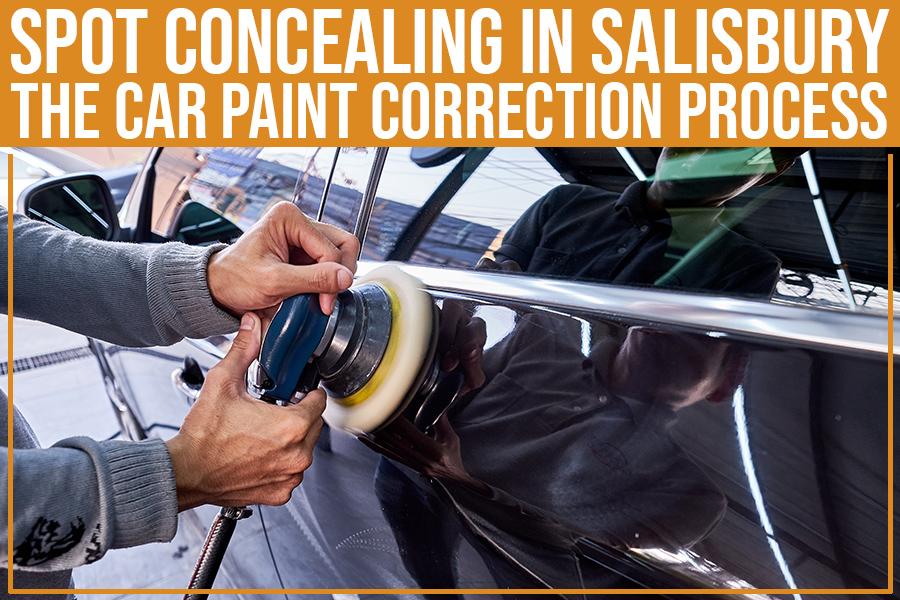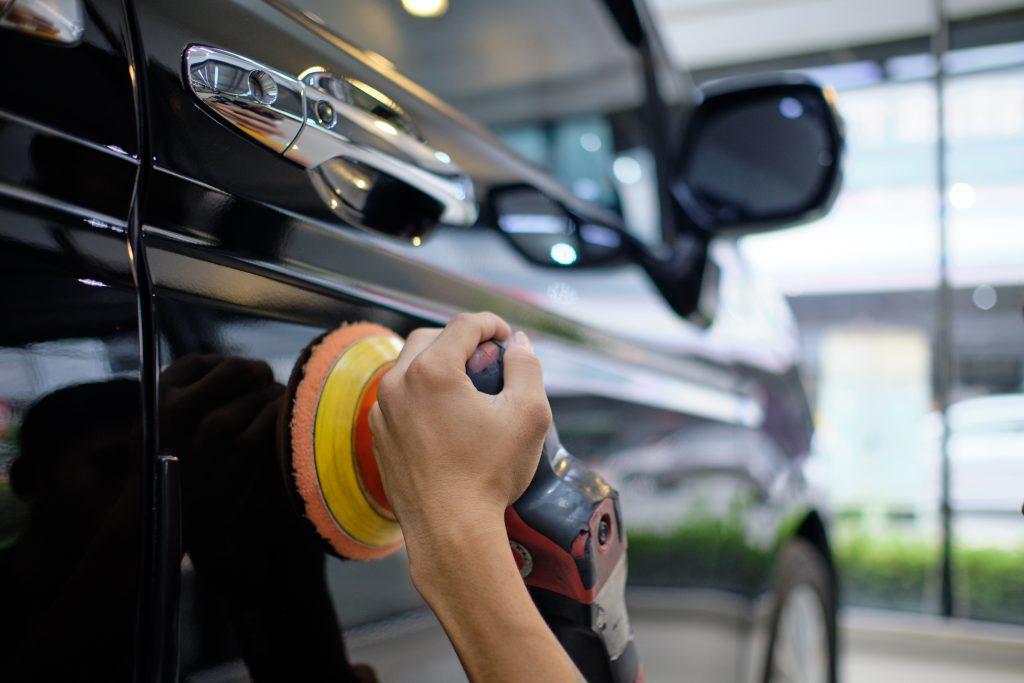
Key Takeaways:
- Car paint correction removes or reduces the appearance of minor blemishes and defects on painted surfaces.
- The process typically begins with assessing the damage that needs to be corrected.
- After identifying the areas that need attention, the technician will restore the surface to its original condition.
- Clean your car’s paint before beginning the process to avoid damaging the paint.
- A clay bar removes contaminants from the paint’s surface.
- If impurities stay, they can cause swirl marks or other imperfections in the finish.
- Sanding is necessary to level out any imperfections in the paint. The proper grit of sandpaper is necessary to avoid damaging the paint.
- Use a buffing pad and a polishing compound when polishing by machine.
- Sealing and waxing will protect the paint from future damage.
Spot concealing is a car paint correction process that can fix minor scratches and blemishes on your car’s paint. It is an excellent alternative to repainting your entire vehicle, and it usually takes a single visit to the auto body shop. This blog post will discuss spot concealing, how it works, and the benefits of having it done to your car. We will also explain how to care for your car’s paint job so that you can keep it looking its best for years!
What is Car Paint Correction?
Car paint correction removes or reduces the appearance of small blemishes and defects on painted surfaces. It is a form of detailing that improves the overall appearance of a vehicle. The process typically begins with assessing the damage that needs to be corrected. Once the areas that need attention have been identified, the technician will begin to apply various concealment products to restore the surface to its original condition.
A few different methods can be used for car paint correction, depending on the severity of the damage.
- For light scratches, swirls, and water spots, polishing may be all that is needed to restore the paint to its original condition.
- If the damage is worse, such as deep scratches or etching from bird droppings, sanding may be necessary to level out the surface before polishing.
- Repainting may be the only option in the most extreme cases where the paint has been severely damaged or is peeling.
No matter what method you use, car paint correction requires a great deal of skill and attention to detail to ensure the repair is undetectable.

Car Paint Correction Process
Washing the Car and Using a Soft Clay Bar
First, wash the car and remove any loose dirt or debris that could damage the paint during the correction process. Once the vehicle is clean, a soft clay bar can remove any remaining contaminants from the paint’s surface.
A clay bar is important because it ensures that all impurities are removed from the paint before polishing or buffing begins. If impurities remain, they can cause swirl marks or other imperfections in the finish. A clay bar kit can be purchased at most auto parts stores and will come with everything you need to harmlessly and effectively remove contaminants from your car’s paint.
Sanding
Once the paint is clean and contaminant-free, it’s time to start sanding. Sanding is necessary to level out any imperfections in the paint, such as peeling or deep scratches. It’s essential to use an appropriate sandpaper grit when sanding your car’s paint. If you use too high of grit, you risk damaging the paint. At the same time, low grit won’t be able to remove all of the imperfections.
Buffing and Polishing
After the paint is sanded, it’s time to start buffing and polishing. This step will remove any swirl marks or scratches left behind from the sanding process. It will also give the paint a nice shine. Buffing and polishing can be done by hand or with a machine. If you do it by hand, you’ll need to use a polishing compound and a soft cloth. You’ll need a buffing pad and a polishing compound when using a machine.
Sealing and Waxing
The last step in the car paint correction process is sealing and waxing. This step will protect the paint from future damage. Sealing the paint will also make it easier to clean. Waxing will give the paint a deep, long-lasting shine.
Causes of Paint Defects
- One cause of paint defects is poor washing and drying technique. If you wash your car with dirty water or don’t dry it properly, you can end up with swirl marks, water spots, and other defects.
- Bird droppings, tree sap, and other acidic substances can cause paint defects. If these substances are not removed promptly, they can etch into the paint and cause permanent damage.
- Wrong cleaning products also cause defects. Some cleaners are pretty harsh and can strip away the protective wax coating, leaving the paint vulnerable to scratches and other damage.
- Bug guts, road tar, and other sticky substances can cause paint defects if they are not removed promptly. These substances can attract dirt and dust, which can scratch the paint.
- Paint oxidation is another common paint defect. Oxidation occurs when the paint is exposed to sunlight, and the UV rays cause the paint to break down. The paint becomes dull, faded, and chalky.
Check out our blog about simple ways to remove water spots at home.
How to Care for Your Car?
Don’t Park Under Trees
Park your vehicle away from trees in a garage or under an awning. If you must park outdoors, try to find a spot that is not directly under a tree. Leaves can fall from the trees and land on your car, leaving sap and other sticky substances behind. These substances can damage your paint if you don’t remove them promptly.
Wash Your Car Regularly
Dirt, dust, and other airborne contaminants can land on your car and cause the paint to become dull and faded. You can remove these contaminants by washing your car regularly.
Use a Car Cover
If you are going to be away from home for an extended period, it is a good idea to use a car cover. A car cover will shield your car’s paint from the sun’s UV rays and dirt, dust, and other contaminants.
Taking care of your car’s paint is essential if you want it to look its best. These tips can help keep your car’s paint looking new for years.
Have you noticed unsightly blemishes on your car’s paint? Whether your car has been damaged by road debris or you’re simply dealing with the effects of aging and wear and tear, we can help. The expert technicians at Inside Out Car Care, serving Ocean City, MD, have the experience and training needed to execute car paint corrections flawlessly, so you can rest assured that your vehicle will look as good as new when we’re finished.
We’ll start by inspecting your car’s paint to identify all the blemishes that need to be corrected. Once we’ve done that, we’ll select the best products and tools for the job. Get a Free Estimate today!



